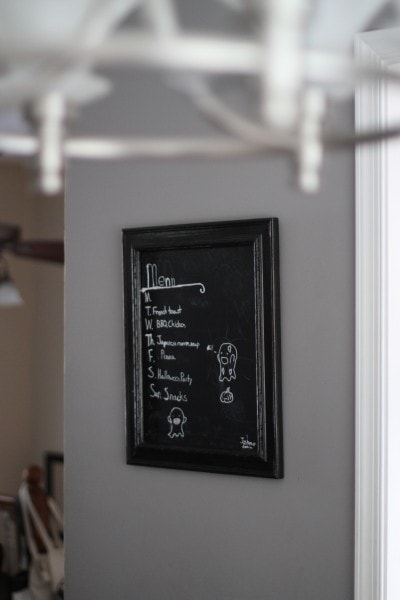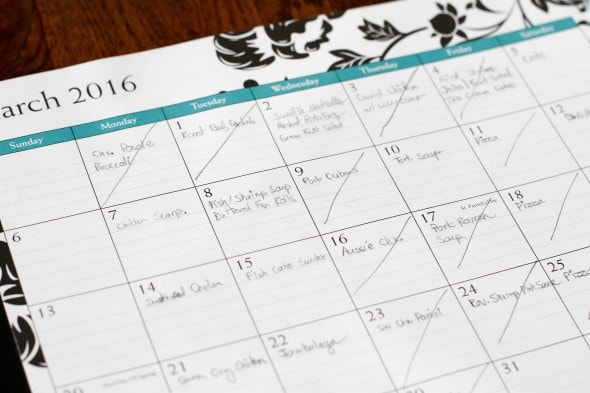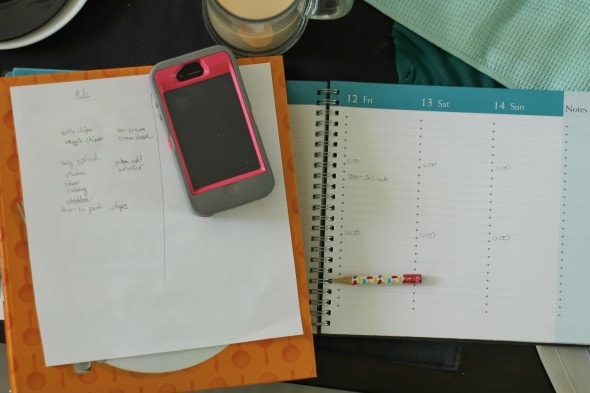A few years ago, I was listening to a Brilliant Business Moms podcast, and Kat Lee was talking about how as she runs her business, she wears a manager hat and a worker bee hat at different times.

Basically, she sets aside some time to put on the manager hat, which means she strategizes and makes lists for herself.
Then she takes off the manager hat and becomes the worker bee, who does the tasks the manager laid out for her.
This was really helpful for me to hear, because in most areas of my life, I am both the manager and the worker bee.
No one manages my blog, my music job at church, my homeschooling, or my household running. And it’s not like I have a minion of worker bees either (except in household running. I do have four helpers there that I manage!).
This meshes pretty well with my personality, because I like to work independently. Still, this much deciding can be exhausting, and all this independence can lead to a lack of direction if I’m not careful to put on my manager hat to direct my worker bee self.
Plus, trying to be the worker bee and the manager in the same moment is somehow more exhausting than separating the two roles.
Having a manager is easy in the sense that you don’t have to do so much thinking and deciding. You just show up, see the tasks laid out for you, and complete them.
Luckily, when I spend some time acting as my own manager, I experience those same benefits. Making decisions is tiring, so if I set aside some time to basically do a whole bunch of deciding, then I’ve freed up other time in my life to just work instead of making decisions.

For example, deciding what to make for dinner every day is a task I hate. It requires an unreasonable amount of mental energy. 😉 So, I find it helpful to sit down at the beginning of the month and plan a month’s worth of main dishes.
It’s not THAT much harder to plan a month than it is to plan a week, and having those decisions already made means that my worker bee self can just execute on those plans.
(and you know that deciding what to make is about 87% of the battle to get dinner on the table!)
As another for instance: I’ve always got a million possible tasks floating around in my brain, and I find it so helpful to put on my manager hat, make a list of important tasks, and then put on my worker bee hat to knock them out.

Without a list of important tasks, I do whatever task comes up on my radar first, without considering how essential it really is. This leads to busyness but not necessarily productivity, which is why I need to wear my manager hat regularly!
(My summer bucket list is a larger-scale example of this. My manager self decides how I want to spend my summer months, and then my worker bee self knocks out the fun stuff and the productive stuff I’ve chosen.)
I also see this manager/worker bee thing at play when I’m planning my week. I write out our hard and fast commitments in my planner and then do a brain dump to-do list over on the right column. That’s a good start, but it’s not quite enough. My manager self needs to take those to-do tasks and pencil them into areas on the calendar so that my worker bee self knows what to do AND when to do it.

Interestingly enough, even though I am both the manager and the worker bee, my worker bee self listens to my manager self! If Manager Kristen puts a distasteful task in the planner for Tuesday morning, Worker Bee Kristen is actually quite likely to knock out the distasteful task instead of procrastinating.
I don’t know if it’s universally true, but there’s something magical about separating the deciding and the working for me. 😉
___________
Do you find this to be true in your life? I’d love to hear your thoughts (and I’m especially interested to hear if some people thrive while simultaneously wearing both hats.)

Carrie Willard
Monday 19th of December 2016
Another way of illustrating this is the Elephant and the Rider. I think the book Switch introduced me to this concept. The elephant is your (non-logical, lizard) brain - a huge, lumbering thing that wants to sleep and eat and poo. We have to make sure the Rider is in charge of this enormous animal, or it can do a lot of damage. https://www.youtube.com/watch?v=ipalwtgoLq0
That was a helpful metaphor for me! So when I make a to-do list for the day, I'm being a good Rider and telling my elephant what to do, otherwise it may sit around drinking coffee and checking Instagram for an hour. :-)
Lori
Monday 28th of November 2016
I really like this distinction, and it's something I've thought about a lot since reading Rachel Jankovic's Loving the Little Years years ago, where she makes a similar distinction. She talks about how SAHMs (or mostly SAHMs) are both boss and worker, and how we need to learn to be both good workers and good bosses. I know that I often fall into the trap she describes, of being both a bad boss who has unreasonable demands (I've been know to put something like "Clean and declutter the second floor" as the sixth item on a 18-item long daily to-do list), and a bad worker who refuses to do what they are asked (I'll then look at that list and go, "Ugh! No way! I'm going to listen to an audiobook and play Bejeweled instead of doing any of it!").
She encourages the reader to be both a good boss, who has reasonable demands and is sensitive to the needs of the worker, and a good worker, who diligently does what must be done. I often think of this distinction when I'm planning my day. Sometimes it helps me to imagine a worker other than myself. If I was hiring somebody to come over and clean my house for 45 minutes, what would I ask them to do? (It would not be cleaning and decluttering my entire second floor!) Then that's a reasonable list of things to expect from myself. If I had a TA who did my grading, how many papers would I expect them to grade in a day? (It would not be all of the papers!) Then that's a reasonable number of papers for me to expect myself to grade. For me, thinking of how I would assign tasks if I was managing other people helps a lot, because my expectations tend to be a lot more realistic.
Anna
Thursday 3rd of November 2016
I do something similar with planning, but I never thought about separating out the two roles. I'm in a period right now where I'm needing to rethink some of my commitments and scheduling, and this is a helpful distinction.
~Lisa~
Sunday 30th of October 2016
You are so right about the brain drain of figuring out what to eat for dinner each night. It's just about the worse job ever. I am going to try your idea of jotting down dinner ideas for a month and see how that goes. At least there will be guidelines to work with.
Madeline
Saturday 29th of October 2016
Definitely better for me to write down my week and my month. Also a daily list usually,too.. I keep a paper day planner. I also do menus a month ahead..soo much less work then week after week. THAT has helped me get grocery shopping down to 3 times a month instead of 4 and we all know less grocery store time means less money spent.
I would just flounder all over the place if I did not keep notes and lists. I love the sense of accomplishment when I see my daily list has (mostly) been taken care of.